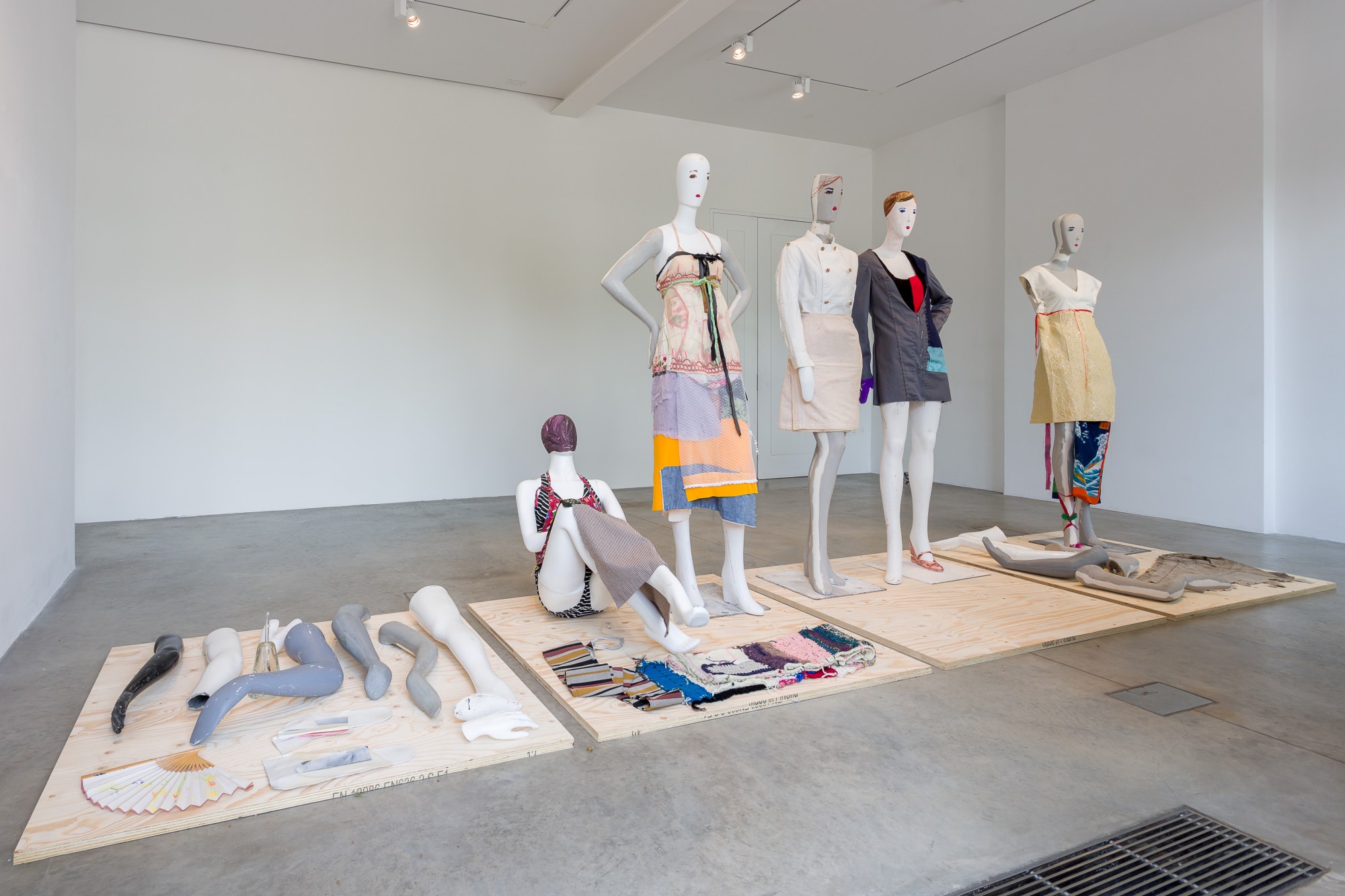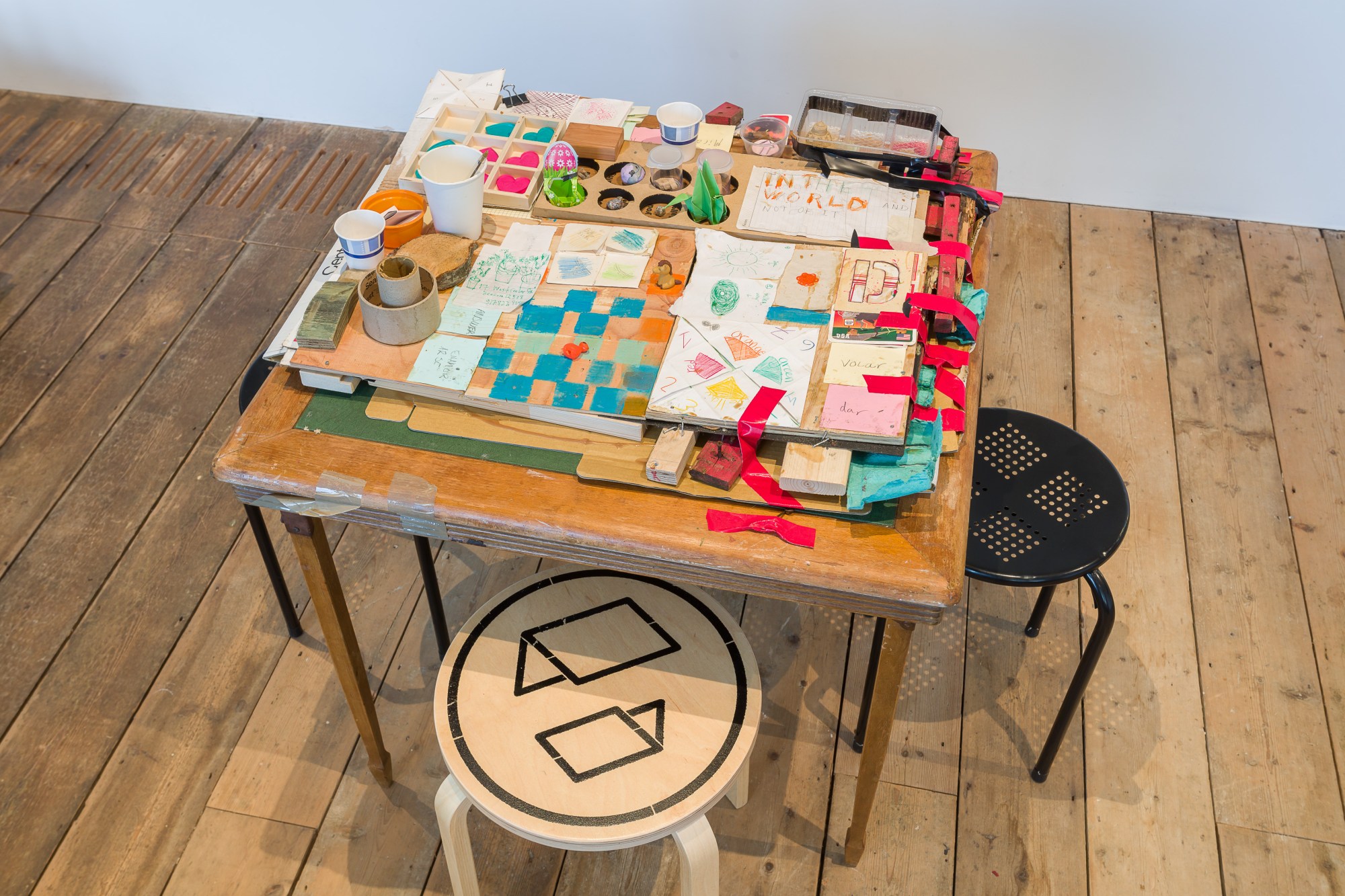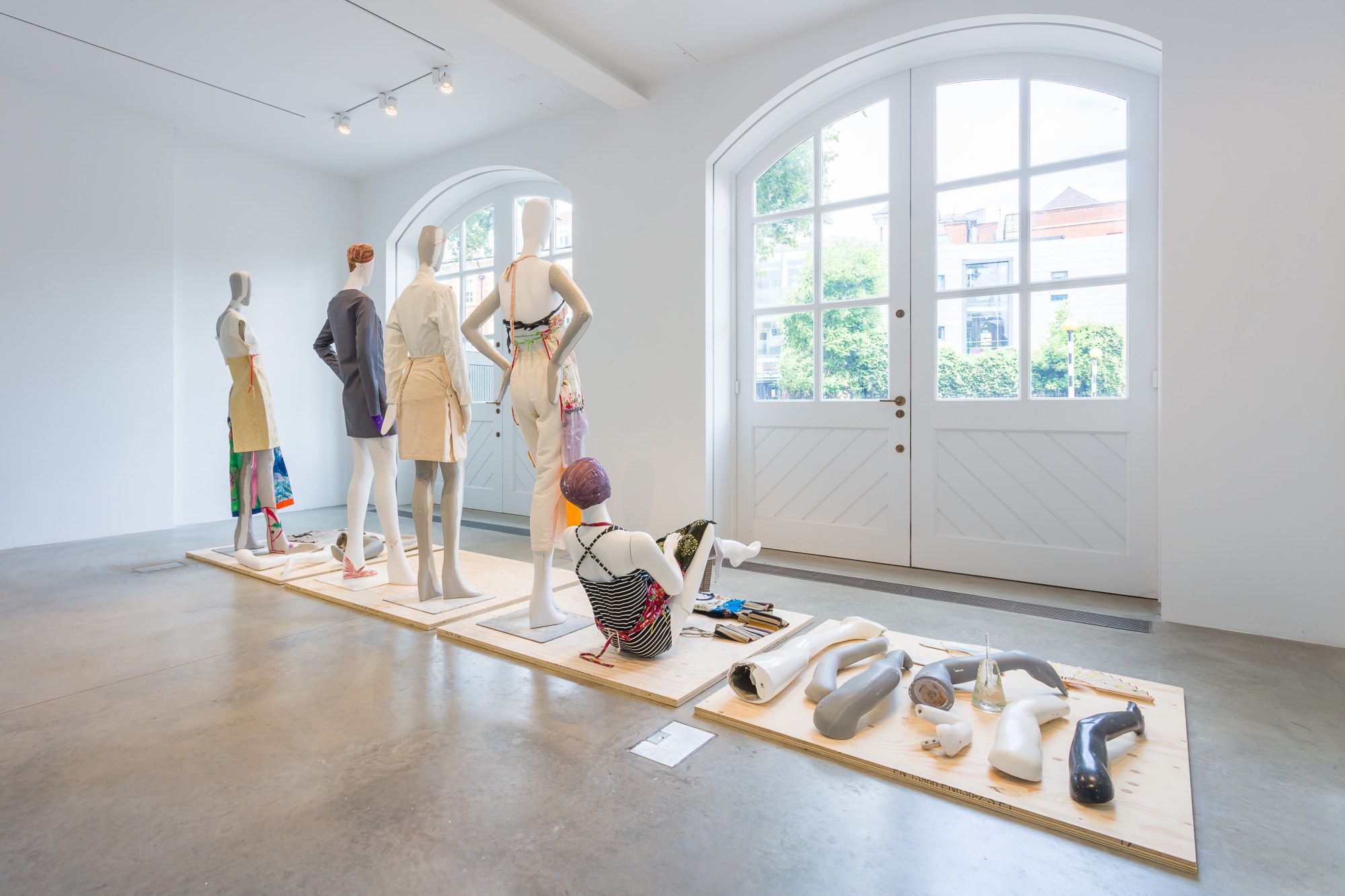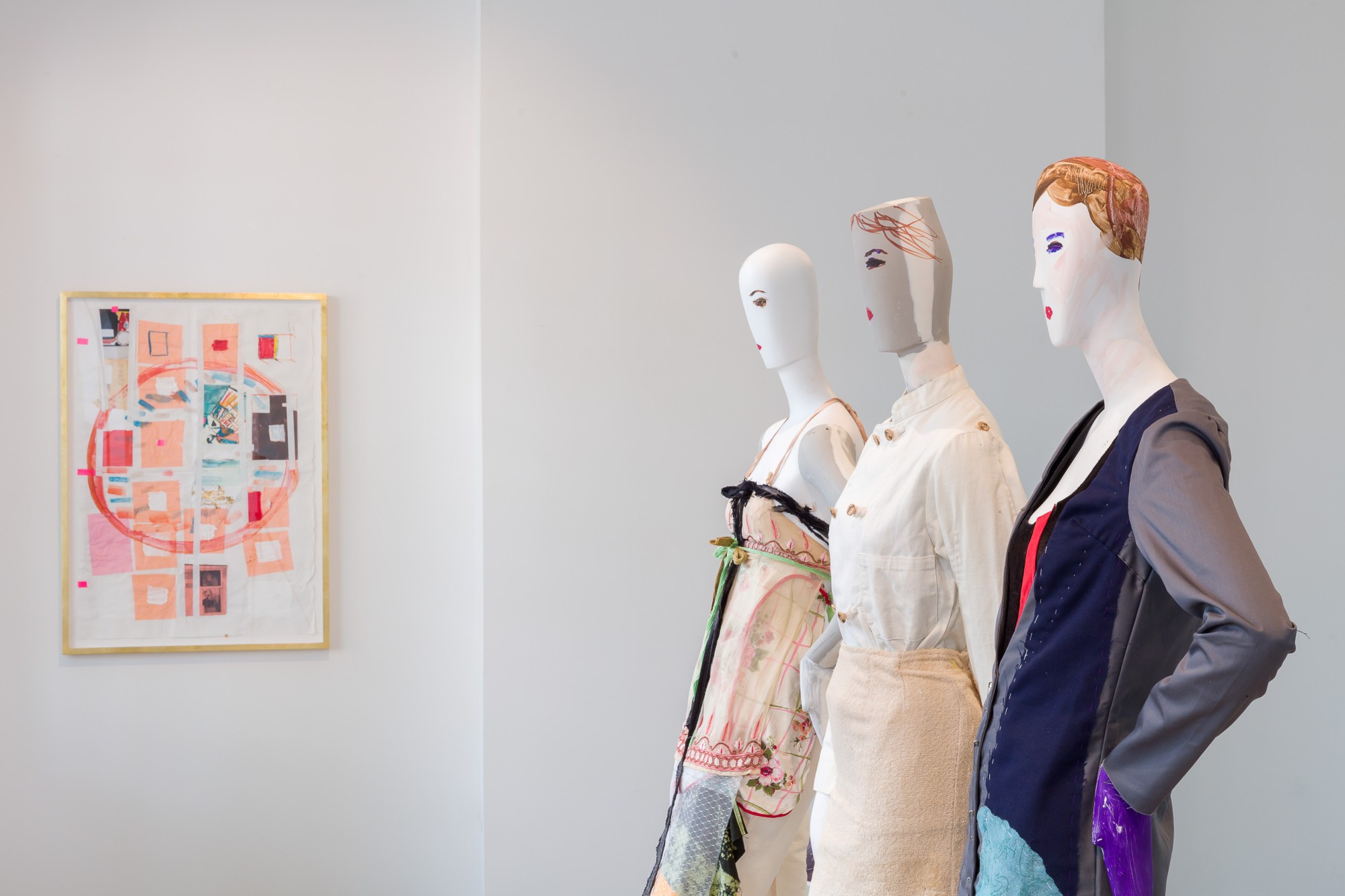The centrepiece of Susan Cianciolo’s new exhibition at the South London Gallery is a series of plywood platforms on which stand a series of mannequins. Some of them are missing limbs, with the disembodied parts laid out on a further platform; others have faces painted on with a delicate, child-like simplicity. While in this context they have an air of something quietly eerie, they once represented the epitome of glamour, having been salvaged from the workshop of the legendary mannequin maker Ralph Pucci in the 90s.
The mannequins were repurposed by Susan to display the garments she produced in her prior life as a fashion designer. Her label RUN was a cult favourite in 90s New York: you can see her influence in the city’s current crop of DIY spirited brands like Eckhaus Latta and Vaquera (the former have specifically cited Susan’s work as a central inspiration, and she has modelled for them). But in 2001, citing psychological burnout, Susan closed the brand and left the fashion world for good. In the time since, she’s built up a career as an artist who flirts with the language of fashion, but uses its own methods against it.
“I am not ever trying to escape fashion,” Susan says, following the opening of her show, titled God Life: Modern House On Land Outside Game Table. “I am using the medium I have always used. I will never escape fashion, it’s my truest passion and love.” What seems to interest Susan instead is seeking alternative ways of looking at what it really means to make clothes: whether that comes through exploring the traditional craft-based techniques that are echoed in her collaged fabrics, or the use of recycled textiles and bricolage to make use of whatever materials were available to her.

In the spirit of Martin Margiela, whose ripples of influence were being felt across the fashion industry when Susan emerged, the show was about scaling things back to something more DIY. Or, to paraphrase Joseph Beuys, who famously declared that “every human being is an artist”, it seems at that mid-90s moment, it began to feel like every human being could be a designer, too.
But what really drives Susan is community: even when her craft-inspired aesthetic began to gain traction in the New York fashion scene, many of the one-off pieces were produced in collaboration with her knitting circle, and she’s always actively invited wearers to customise the garments how they wish. It’s a practicality that reflects Susan’s interest in elevating the domestic: in another room of the current exhibition, you can find a series of “kits” for everything from cooking to pattern-making taped up in cardboard boxes on the floor. There are tables that look like they might belong in the art classroom of a primary school, covered with what Susan nicknames “games”; they are, in fact, the product of a collaboration with the artist’s 11-year-old daughter, Lilac.
“What the art world gives me that fashion didn’t is a sense of space, in the way that in music there are pauses,” she explains. “I do have the choice now, whether I want to commit to exhibitions back-to-back or if I want to have space in between. Although I adapted to the fashion schedule, which shows twice a year, in the long run I did work outside of those guidelines, showing more like once a year.” It’s this charming blend of the personal and the universal, of art and life, that could only come about with the breathing room that Susan can now enjoy as an artist, rather than being stuck on the hamster wheel of seasonal collections.

“Looking back now, I do feel that training in the fashion industry was very beneficial,” she continues, “because I have a sense of overdrive if there are shows overlapping. Sometimes I do enjoy the pace, but there seems much more freedom and choice to walk between the lines of a faster pace, or a more restorative pace, in art.”
This sense of the restorative — of art or design that can offer some kind of balm for the soul — is also informed by Susan’s spirituality. I ask her whether a series titled ‘God is a jacket’ is a sly dig at conspicuous consumption (Susan’s designs have always been interested in sustainability, long before the issue reached critical mass) but the real reason is something more humble. “The title for that body of work was chosen to explain the concept that any tangible object actually still holds this theory of God,” she explains. “It’s just saying that God is everywhere.”
Now also working as an assistant professor in fashion design at the Pratt Institute, she’s able to dip her toe into the art world whenever it feels right, and produce work at a pace that allows her to keep everything more balanced. Plus, there’s the added benefit of constant interaction with students, which further feeds into her collaborative outlook. “I feel that stepping outside of my own work and into the students processes is an important and humbling reminder for myself that it’s a lifelong journey. I am still learning! The students are more my teacher than I am theirs.”

And there’s another benefit too: the passing on of her singular approach to art-making to a new generation. All of the buzzwords that seem to cluster around the latest hotly-tipped brands — authenticity, sustainability, craft — were Susan’s hallmark two decades ago. As young and emerging designers increasingly embrace these values once again, it seems only right that she should these days also be working as a fashion educator. Susan might say she’s learning from her students, but there are lessons we can all learn from her inclusive, open-armed creative approach.
Susan Cianciolo ‘God Life: Modern House On Land Outside Game Table’ is open until the 1 September at the South London Gallery, with free admission.
